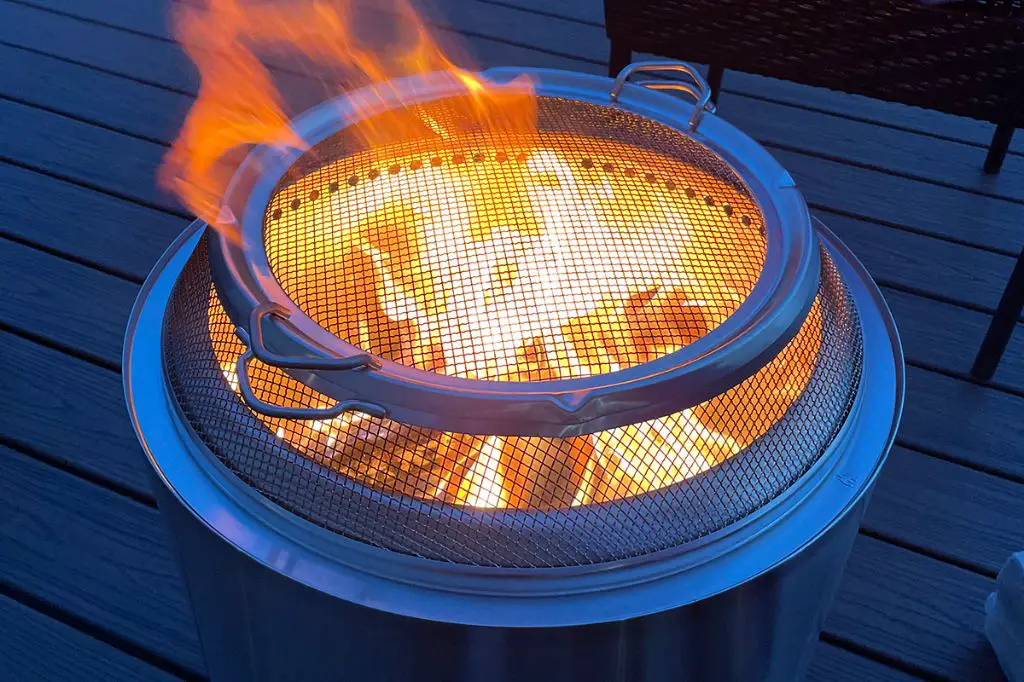A Solo Stove is a unique, smokeless portable fire pit that uses patented technology to burn wood in a controlled, efficient manner. While Solo Stoves are designed to safely burn wood, there are some things you should not put in them to avoid damage or unsafe burning conditions.
Page Contents
Why You Should Be Careful What You Burn
The Solo Stove is engineered so that the fire burns hot but without producing excess smoke. This is achieved through a double-wall design and a secondary combustion chamber that re-burns smoke before it exits the stove. Throwing random items into the fire that are not meant to be burned can disrupt the airflow and combustion design leading to smoky fires, incomplete burning, and even damage to the stove.
Unsafe Items Not to Burn in a Solo Stove
Here are some of the main items you should avoid putting in your Solo Stove:
- Plastics – Plastics can release toxic fumes when burned and leave behind melted residue that is difficult to remove.
- Coated or Treated Wood – Wood that is coated with paint, stain, or preservatives can release harmful chemicals when burned.
- Trash and Debris – Items like cardboard, wrapping paper, and general trash will not burn cleanly.
- Leaves and Pine Needles – These can fly out of the stove and send sparks into the surrounding area.
- Coal – The coal will not burn properly in the stove’s setup.
- Driftwood – Ocean driftwood retains salt which corrodes the Solo Stove.
Items That Could Damage the Stove
In addition to the unsafe burning items above, there are some other things you should keep out of your Solo Stove to avoid damaging it:
- Rocks or Concrete – These can crack or warp the stainless steel.
- Glass – Glass can melt and fuse to the stove walls.
- Cans or Close-Ended Metal Items – These can get extremely hot and explode.
- Very Long Branches or Logs – These could bend or distort the stove walls.
Recommended Materials to Burn
To keep your Solo Stove running safely and efficiently, burn only these recommended materials:
- Dry hardwood pieces or logs less than 250mm or 10 inches long
- Dry softwood twigs and sticks
- Firestarters specifically made for wood stoves
- Wood pellets in limited quantities that are specially made for stoves
Always check the Solo Stove manual for full details on proper fuels to burn. The key things to look for are seasoned, dry woods that will burn hot, clean, and safely within the design of the stove. Avoid anything labeled not to burn, that could explode, or that could release unsafe chemicals.
Maintaining Your Solo Stove
In addition to being careful what you put inside it, following some basic maintenance practices will keep your Solo Stove in good working order:
- Fully clean out ashes after each use
- Follow initial curing/seasoning instructions when new
- Keep outside of stove covered when not in use
- Inspect for damage and replace components as needed
- Use nylon brush to scrub interior walls if needed
- Avoid putting stove away wet or with moisture inside
Safety Precautions
While Solo Stoves are designed for inherent safety, always practice these precautions when using your stove:
- Use only on a non-flammable surface away from combustibles
- Have a fire extinguisher and water bucket handy
- Do not leave unattended when lit
- Supervise children and pets around the stove
- Allow to fully cool before handling or moving
- Make sure the stove is permitted in your area
Conclusion
Solo Stoves provide a great portable camping and outdoor cooking solution when used properly. Avoid burning anything plastic, coated, trash debris, leaves, coal, driftwood, rocks, glass, cans, or closed containers. Follow maintenance and safety tips and only burn recommended dry, seasoned hardwoods. This will ensure safe operation and long stove life.
